A walk in the town
Saint Ladislaus Roman-Catholic parish church
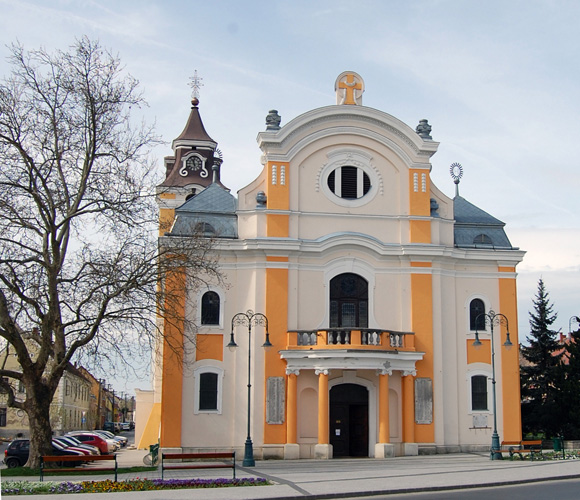
The final and recent form of the church built in several phases was established following an expansion and reconstruction in the year 1927. It remains to be proven, however it can be assumed, that a church stood in the same place in the 16th century, however written sources reveal that the church could have been Lutheran, made of wood. Once Ferenc Nádasdy III returned to Catholicism 1643 began to build, or reconstruct churches on his estates. He began restoring the church 1645, however fires destroyed the interior furniture at the beginning of the 18th century and only the walls remained. The building was restored only three decades later in 1732. Church protocols report about the church equipment. These reveal that the church had three bells, various organs and a main entrance aligned to the west. The apsis on the eastern side was demolished 1926 and the entrance which is still used today was shaped at the same time. Believers could see the horse-back figure of King Saint Ladislaus on the side-walls. In the course of the last large-scale restauration, which was opposed by many people, all typical elements of the old building were removed. The frescoes which can be seen today were made by István Z. Soós 1938/39 and depict the life of King Saint Ladislaus, as well as Hungarian saints and scenes from the Holy Bible.
Lutheran church
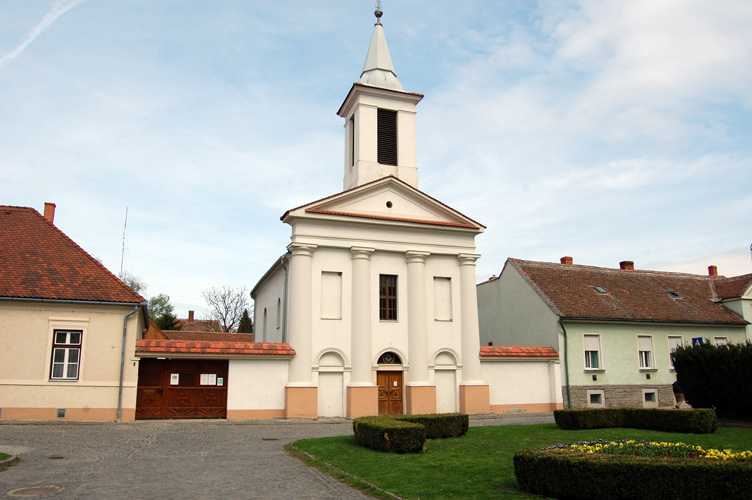
The church which can be seen today was built on the foundations of the building erected 1794. Its construction is related to the Edict of Tolerance after which Lutherans had the possibility of building churches and schools. The church built in Sárvár had both a bell and an organ. However the premises of the Lutherans burned down in the fire of 1829. Reconstruction works began 1834 under the guidance of Sámuel Geschrey who settled down in Sárvár a few years earlier. The church was expanded and two side-chancels capable of holding more believers. The church still bears its Classical shape.
The former Korona Inn
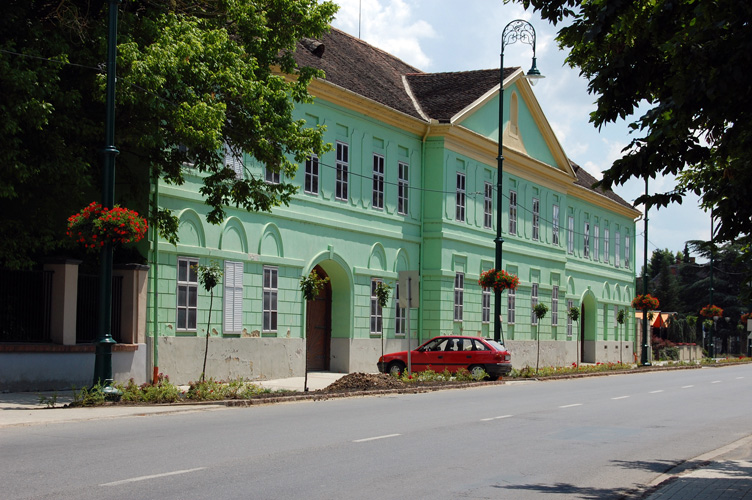
The building is private property today, but it is worth stopping in front of it for a while. The early history of the building is uncertain, but some sources report about it being an inn from 1818. Originally it was called Szalmakocsma (Straw Pub) and it received its name, originating from the coat of arms above the entrance, after it was rebuilt at an unknown date. The walls of the Inn witnessed an active cultural public life in the town in the last decades of the 19th and in the first ones of the next century.
Town Hall
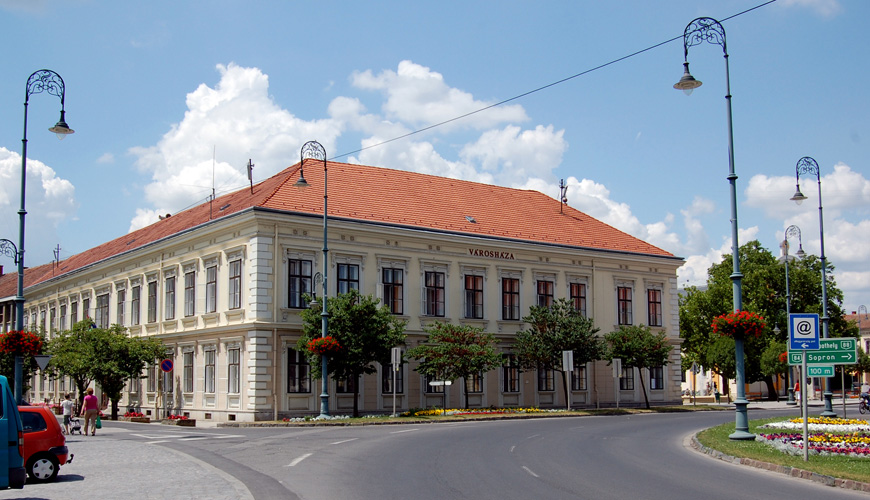
The building to the south of the former market square (today: Kossuth-Square) was built in the period of 1878-1882 according to the plans of Lajos Geschrey. The embellishment of the building and the hood-mouldings above the windows are pleasant sights of the single-storey building. The balcony on the southern side was originally not a part of the Town Hall, as it was built in the 20th century. Visitors can listen to the pleasant melody of bells several times during the day.
The building of the first Savings Bank
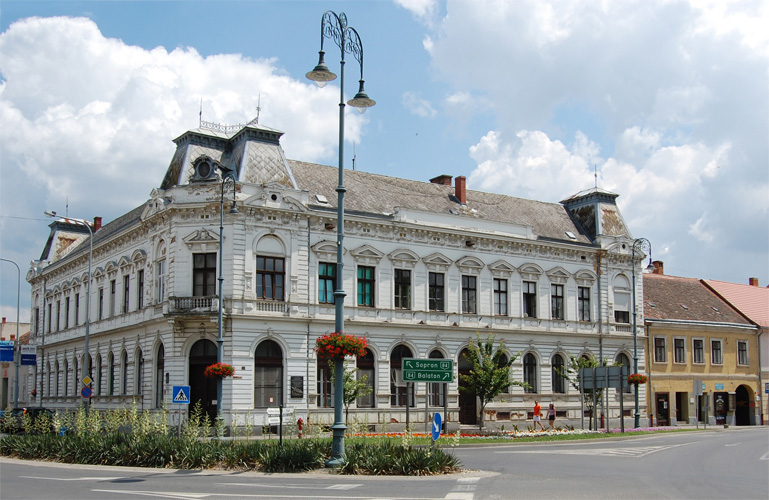
The single-storey building erected 1891 and showing a town-like flair was the home of the first fiscal institution of Sárvár. The year of construction and purpose of the building can be seen on the date and the letters EST carved into the cast stone of the gateway. The planner of the L-shaped building is unknown. Merchants from Sárvár presented their goods in the first decades of the 20th century on the ground floor of the building.
Calvary chapel
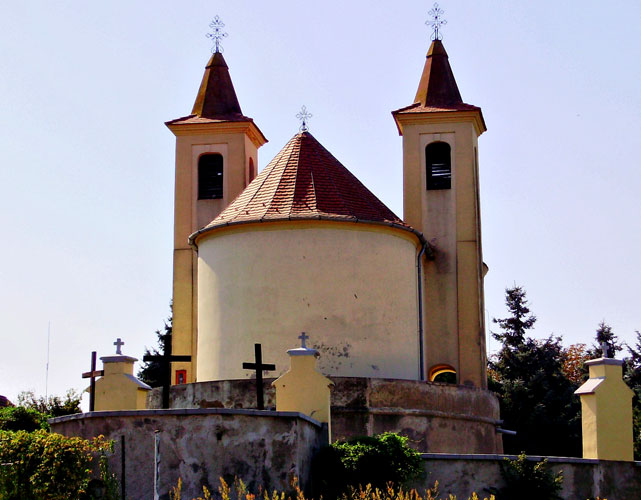
The first data relating to the Calvary in the Hegyközség part of the town date back to the 1750ies and speak of a church which was being built at that time. It is located on the hill on the right side of the road leading towards the spa and out of Sárvár. The painted wooden gropu of statues of the building on the Úr-hegy depicts Jesus on the crucifix and the figures of Virgin Mary, Mary Magdalene and John the Apostle in an emotional posture. The scene is accompanied by the painting on the wall of the apsis depicting the two rouges. The piety statue placed in a niche was made 1907. Marietta Horváth carved the Passion-scenes built to the walls surrounding the Calvary-church 1977.




